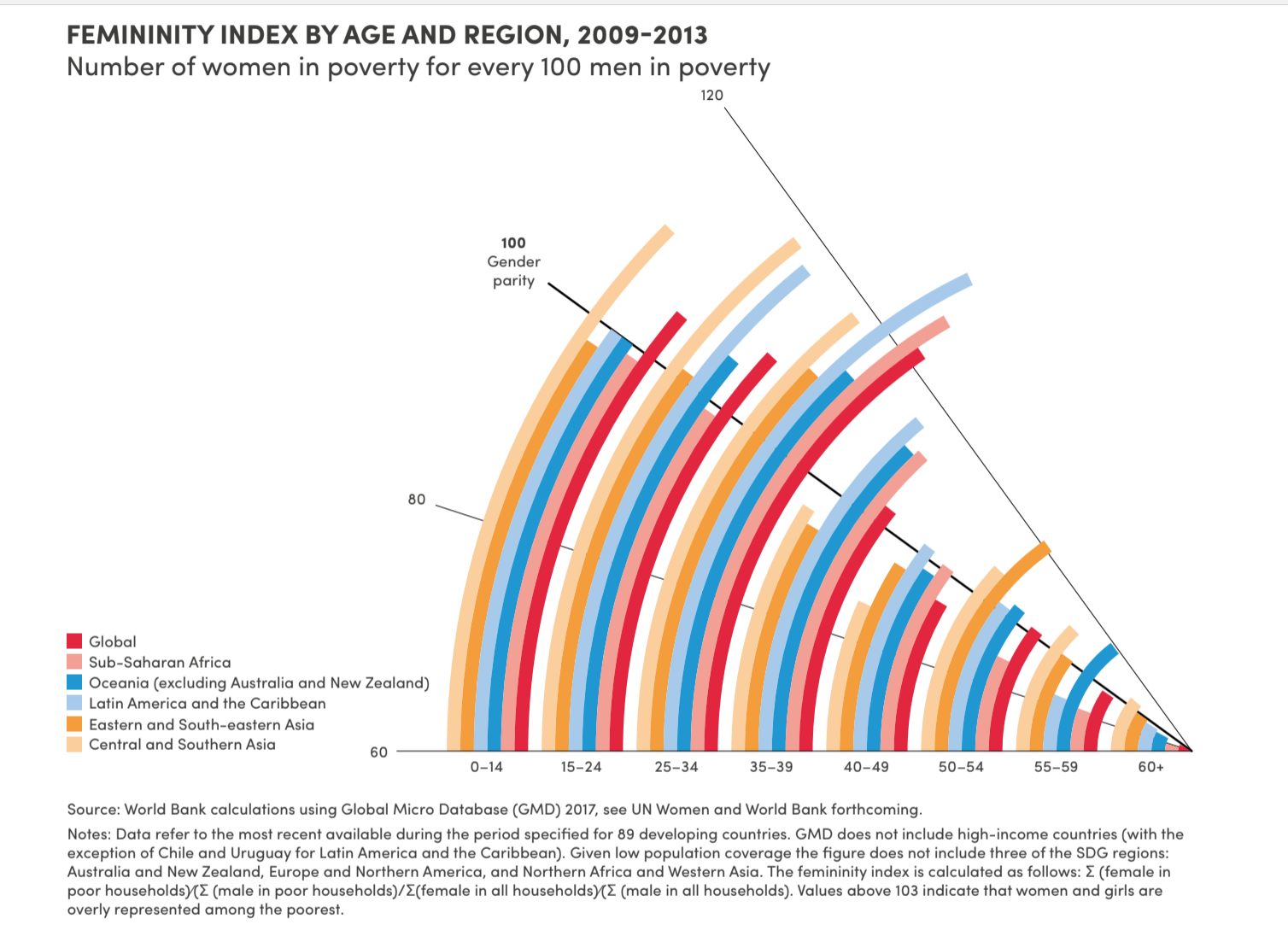Gender equality is a catalyst for social progress. Thanks to a new report from the UN, we now have the data to prove it.
The rubric for the release of this report by is the Sustainable Development Goals, which is the UN’s guiding global development blueprint. The SDGs, as they are known, was created in 2015 with goals to achieve by 2030.
The international community signed on to a daunting task when it set out to achieve 17 Sustainable Development Goals by 2030. This report contends that prioritizing gender equality can accelerate progress toward all 17 goals.
Using the most recently available data, a team of researchers looked at how gender equality – an SDG in its own right – intersects with all the other goals. They also assessed the current state of gender equality in those dimensions as well as the kind of policy, financing and accountability measures needed to turn goals into reality.
It’s the first time a UN agency has looked at all the SDGs from a gender equality perspective.
Take the first goal, for example: end poverty in all its forms everywhere.
“We’ve heard a lot about how poverty is feminized, and 70 percent of the world’s poor are women,” Shahra Razavi, UN Women’s chief of research and data, told UN Dispatch. “But a lot of that was based either on estimates or faulty assumptions.”
So, Razavi’s team reassessed the data and found that in 89 countries, 4.4 million more women than men live in extreme poverty – on less than $1.90 a day. Globally, women are 4 percent more likely to live in extreme poverty than men.
But then they broke down the data to look at just 25- to 34-year-olds – those in their prime reproductive and working years – and the gender gap widened significantly. In that age range, women are 22 percent more likely than men to live in extreme poverty.

“It shows that doing that kind of reconciliation between production and reproduction or paid work and [unpaid] care really carries a heavy penalty for women,” Razavi said.
However, an intervention to bridge that gap – such as investment in early childhood education and care – can catalyze progress on multiple dimensions.
For example, the report calculated that if South Africa invested 3.2 percent of its gross domestic product (GDP) every year in early childhood education and care, it would not only result in universal coverage for all children five years old and younger, but it would also create 2.3 million new jobs and raise female employment by more than 10 percent. Those new jobs would in turn generate up to $3.8 billion in tax and social security revenue (about 1 percent of GDP).
Therefore, early childhood education and care would reduce the time women spend on unpaid care (Goal 5 Target 4), increase women’s access to employment (Goal 8, Target 5), create decent jobs (Goal 8 Target 3); improve children’s health and nutrition (Goal 2 Target 2), enhance children’s readiness for primary school (Goal 4 Target 2) thereby reducing inequalities of outcome (Goal 10 Target 3).
“By addressing some of the gender inequality constraints you can also unleash the forces that are necessary to meet many of the other goals,” Razavi said.
That should be encouraging news for SDG critics who feel there are too many targets to make significant progress toward any. On the flip side, that also means it’s impossible to achieve any SDGs without addressing gender inequality, because inequality in one dimension often creates an unending cycle of poverty and injustice.
For example, in India a 20- to 24-year old woman from a poor, rural household is almost 22 times less likely to attend school than one from a rich, urban household. She is also five times more likely to marry before she turns 18 and nearly six times as likely to become an adolescent mother. Then, she is also more likely to suffer complications during childbirth and experience violence.
Sadly, according to the report, more than 23 percent of women and girls aged 15 to 49 in Central and Southern Asia have experienced domestic violence just in the last 12 months. That is second only to Oceania, where 40 percent of women and girls have recently experienced violence at the hands of a current or former intimate partner.
The statistics presented in the report are telling, yet current data sets are still lacking. According to Razavi, data from 2010 and later were only available for 24 percent of the indicators. When her team needed two data points to determine progress, regress or stagnation, it was only available for 17 percent of the indicators, even if they went back to 2000.
Still, this is the first report of its kind, and UN Women plans to continue assessing the intersections of inequality so that the data can spark a “real give-and-take between governments, social groups, social movements and civil society in defining for each country what its own pathways are to addressing many of these hurdles,” according to Razavi.
“It is feasible,” she said. “It’s just a question of prioritizing and putting the political will behind the promises that member states made when they signed onto the agenda.”
